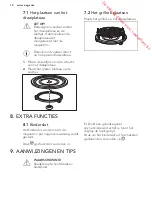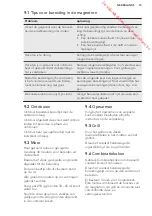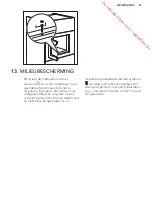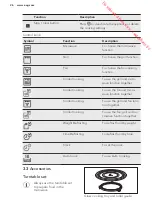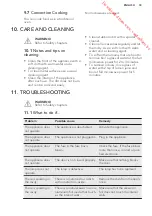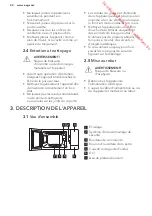
and then remove the pieces that
started to defrost.
Defrosting butter, portions of gateau,
quark
• Do not fully defrost the food in the
appliance, but let it defrost at room
temperature. It gives a more even
result. Remove all metal or aluminium
packaging before defrosting.
Defrosting fruit, vegetables
• If fruit and vegetables should remain
raw, do not defrost them fully in the
appliance. Let them defrost at room
temperature.
• To cook fruit and vegetables without
defrosting them first use a higher
microwave power.
Ready meals
• You can prepare ready meals in the
appliance only if their packaging is
suitable for microwave use.
• You must follow the manufacturer's
instructions printed on the packaging
(e.g. remove the metal cover and
pierce the plastic film).
Suitable cookware and materials
Cookware / Material
Microwave
Grilling /
Convec-
tion
Defrosting
Heating
Cooking
Ovenproof glass and porcelain with no
metal components, e. g. Pyrex, heat-
proof glass
Non-ovenproof glass and porcelain
1)
X
X
X
Glass and glass ceramic made of oven-
proof/frost-proof material (e. g. Arco-
flam), grill shelf
Ceramic
2)
, earthenware
2)
X
Heat-resistant plastic up to 200 °C
3)
X
Cardboard, paper
X
X
X
Clingfilm
X
X
X
Roasting film with microwave safe clo-
sure
3)
X
Roasting dishes made of metal, e. g.
enamel, cast iron
X
X
X
Baking tins, black lacquer or silicon-
coated
3)
X
X
X
Baking tray
X
X
X
Browning cookware, e. g. crisp pan or
crunch plate
X
X
www.aeg.com
28
Downloaded from www.vandenborre.be

